How To Create A Foolproof Sales Strategy [Examples]
Casey O'Connor
A sales strategy is the blueprint your sales team follows in order to:
- Connect and engage with buyers through value-driven interactions,
- Improve the selling process by optimizing each stage of the sales pipeline, and
- Close more deals and generate more revenue
A well-planned sales strategy is a comprehensive, detailed action plan that outlines both your team’s goals, as well as the actions needed to reach them. The sales strategy should also detail the company’s branding and value proposition so that sellers are tuned into the product’s unique selling point.
In this article, we’ll go over everything you need to know about designing and executing a successful sales strategy.
Here’s what we’ll cover:
- Why Your Sales Team Needs a Strategy
- What to Include in a Sales Strategy
- Sales Strategy Examples – And When You Should Use Them
- How Yesware Can Help Take Your Sales Strategy to the Next Level
Why Your Sales Team Needs a Strategy
For any sales team hoping to improve their performance, developing a clear and deliberate sales strategy can be the catalyst for meaningful improvement and scalable growth.
The sales strategy defines the level at which your team currently operates, what goals you would like to reach, and all the steps you’ll take to achieve them. And while it may be overwhelming to sit down and spell everything out, your sales team will reap many benefits from having this kind of structure and accountability in place.
Most high-performing sales teams operate under a closely monitored, structured sales process.
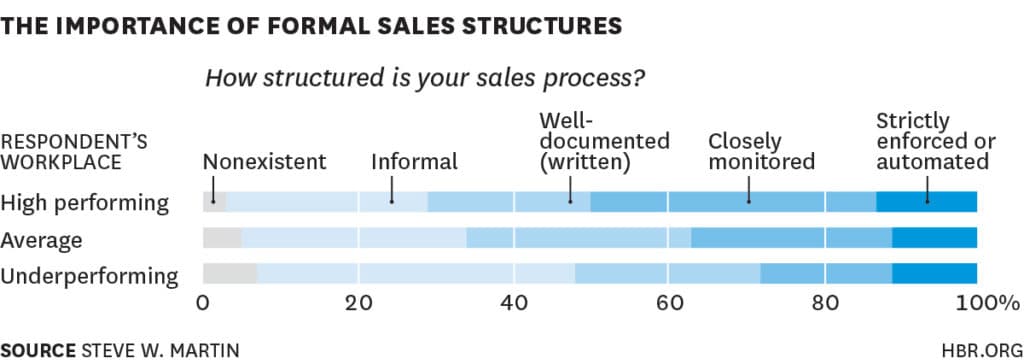
You can consider your sales strategy as your sales team’s structured path to scalable and sustainable growth.
Pipeline Optimization
A well-designed sales strategy helps your team fill the top of the funnel with leads who are good fits for your product.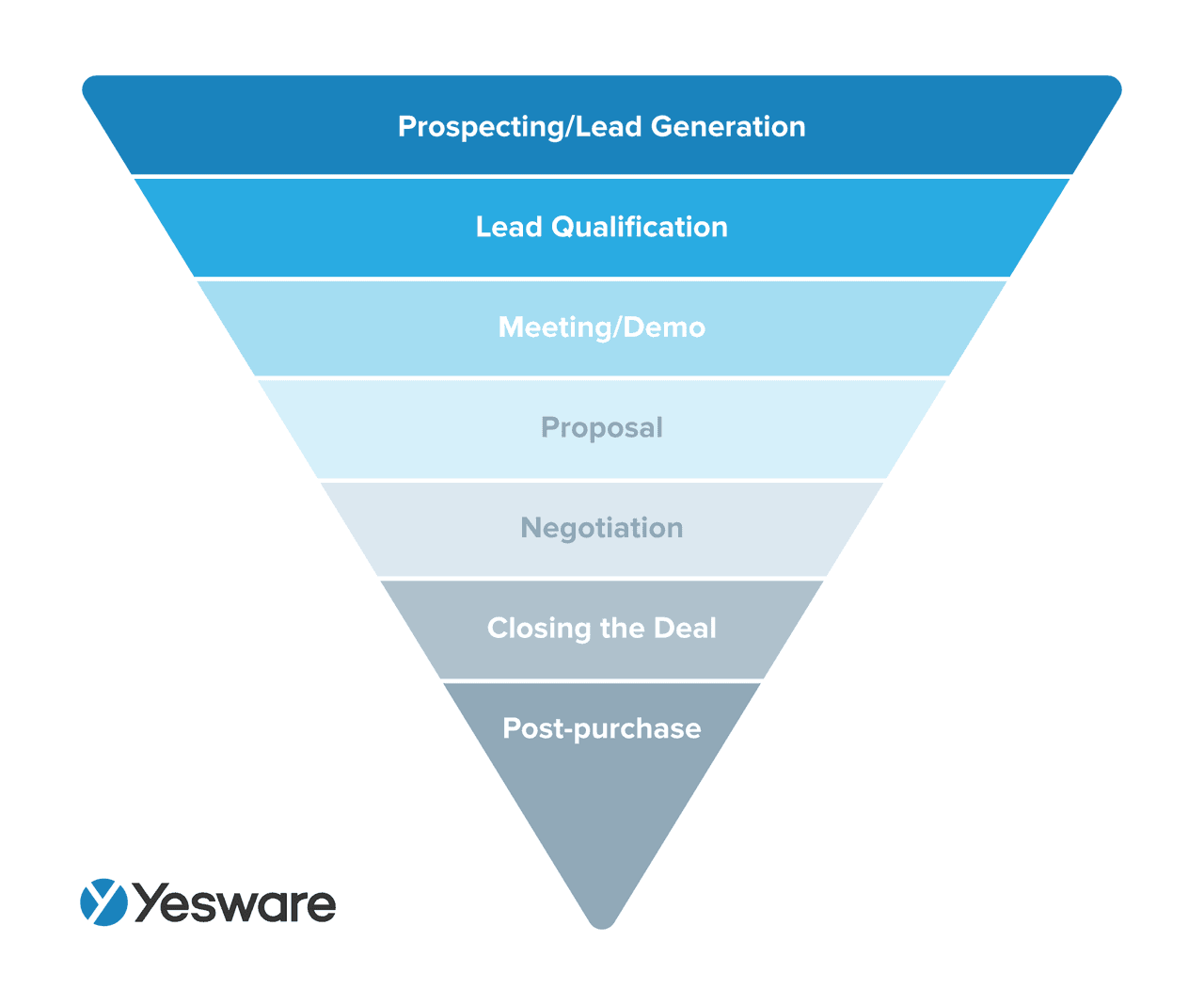 The more best-fit leads you can attract to the top of the funnel, the more data your team can collect on the subsequent pipeline stages. The stage-optimization process may take some trial and error; it’s not unusual to go through many iterations before finding a workflow that maximizes sales.
The more best-fit leads you can attract to the top of the funnel, the more data your team can collect on the subsequent pipeline stages. The stage-optimization process may take some trial and error; it’s not unusual to go through many iterations before finding a workflow that maximizes sales.
In the meantime, your sales strategy allows your team to run like a well-oiled machine, predictably generating opportunities and closing deals.
Customer Value
The best sales strategies are aligned with the buyer’s journey.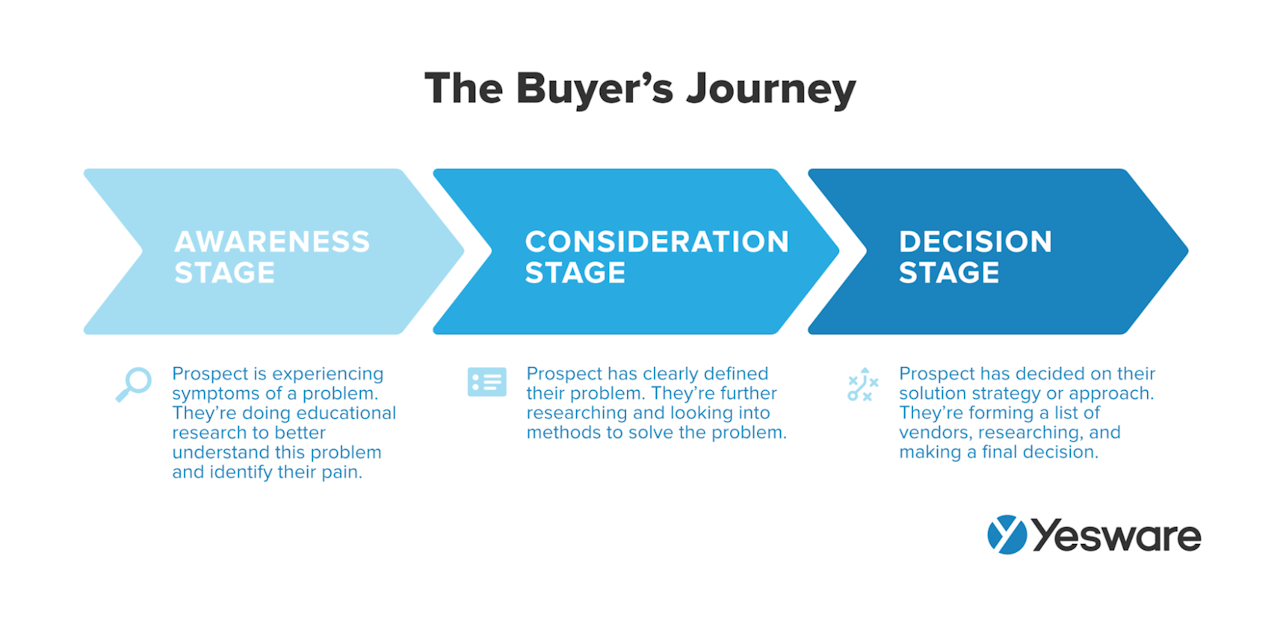 Each component of your sales strategy should be reverse-engineered to align with the experience of the buying process. This will ensure that your sales strategy is constantly speaking to the needs of the buyer, therefore delivering value throughout the process and increasing the likelihood of a sale.
Each component of your sales strategy should be reverse-engineered to align with the experience of the buying process. This will ensure that your sales strategy is constantly speaking to the needs of the buyer, therefore delivering value throughout the process and increasing the likelihood of a sale.
Team Culture
Creating and implementing a sales strategy also empowers sales reps to consistently reach for new and aggressive goals.
In fact, when asked about what would improve their performance, most employees reported that the most beneficial development would be greater clarity around their specific role and how it fits into the company’s overall vision.
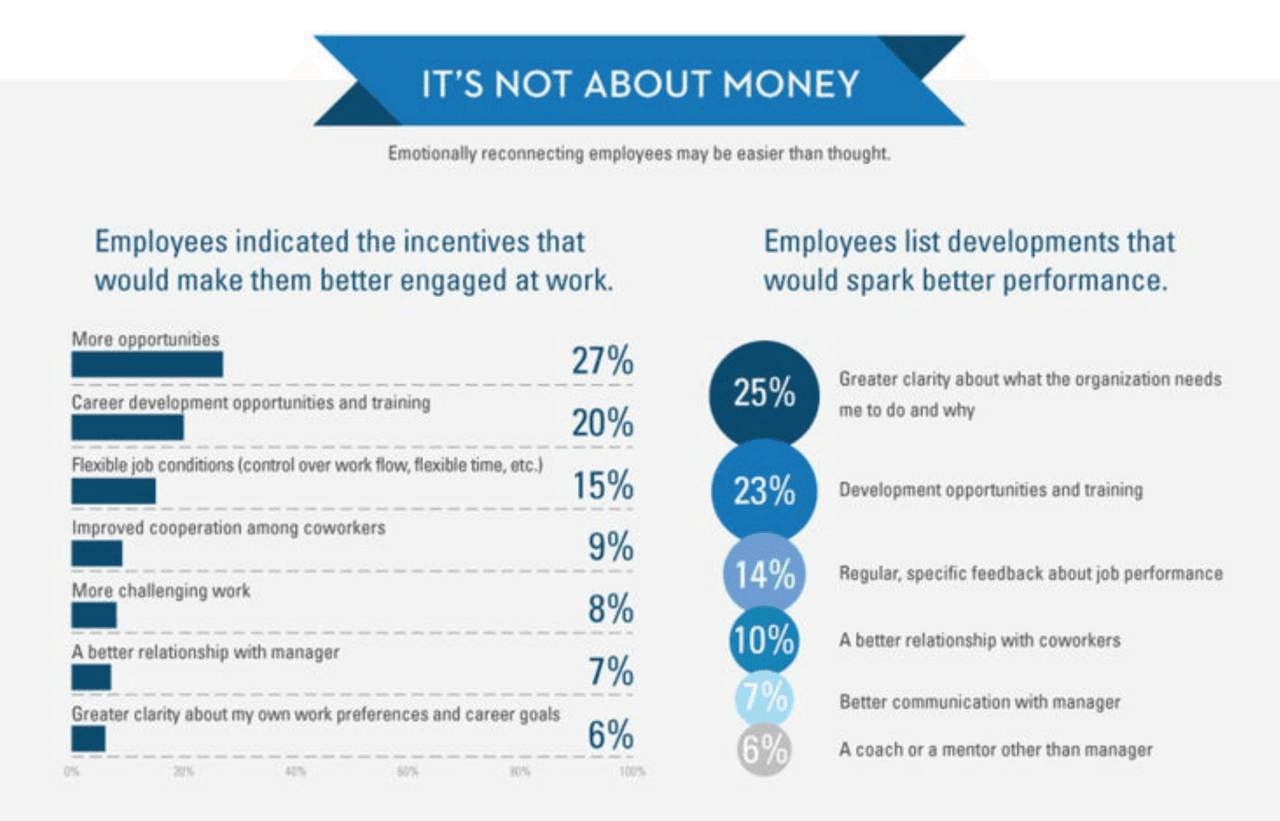
The sales strategy helps your team know what actions to take, and when. This kind of specific direction enables and empowers salespeople to execute with confidence and proficiency.
What to Include in a Sales Strategy
Of course, the way you design your sales strategy will be unique to your team and its sales goals, as well as those of your organization as a whole. Everything from the KPIs that matter most, to the individual responsibilities of each rep will vary according to your team’s priorities.
That being said, there are several things that should be included in just about any comprehensive sales strategy. These are, for the most part, universally beneficial pieces of information that will serve each member of your team to better understand the sales strategy and its components.
Data
Regardless of the specifics of your current sales strategy — or, for that matter, any you’ll adopt in the future — it’s imperative that you outline the current benchmarks and forward-looking targets for your most relevant sales KPIs. 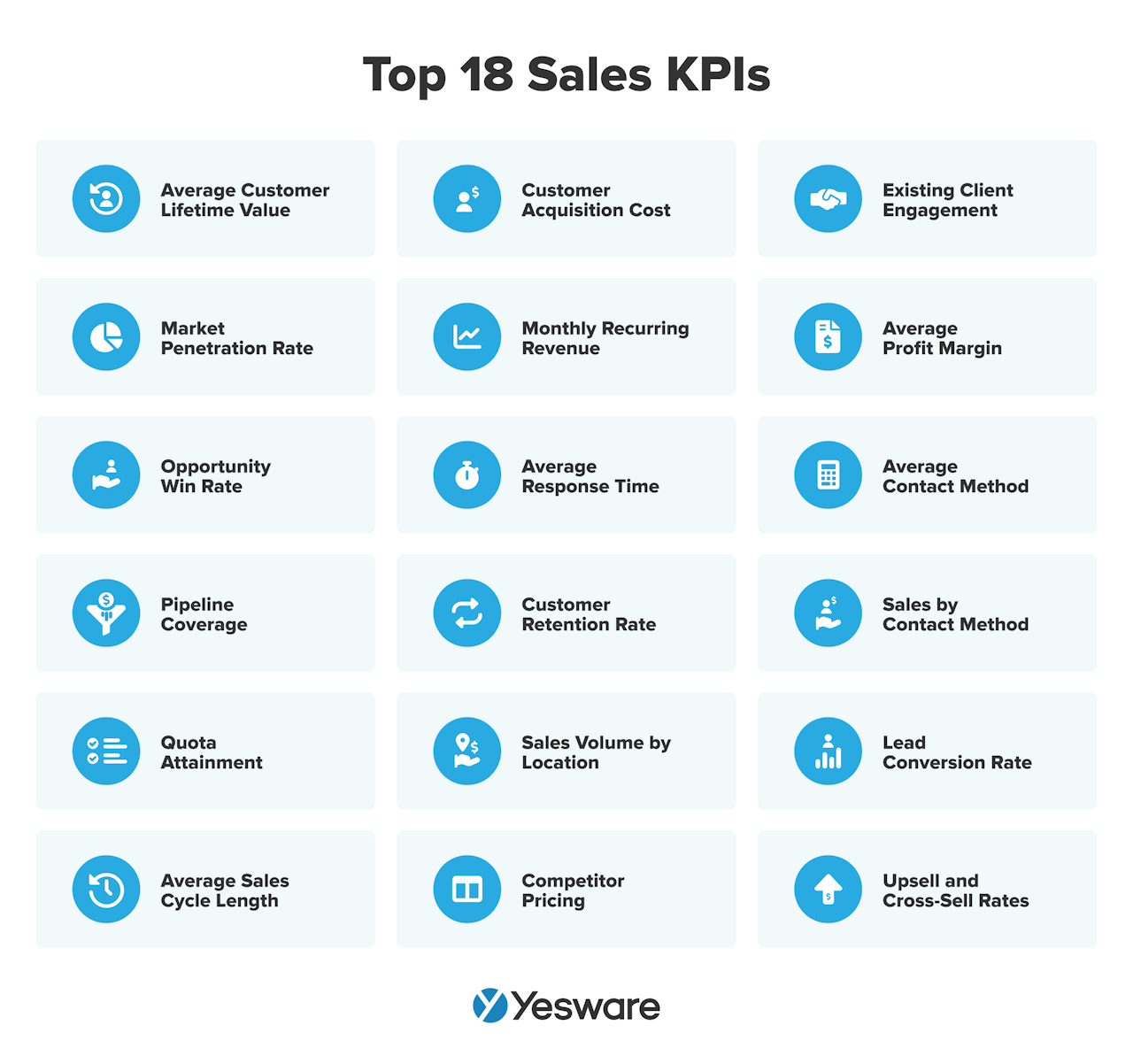 There are others to consider tracking, too:
There are others to consider tracking, too:
- Individual pipeline stage conversion rates
- Lead generation metrics
- Total revenue and new business revenue
- Year-over-year growth
- Customer average lifetime value
Each of these gives sales managers valuable insights into the health of their sales pipeline and strategy.
Ideal Customer Profile
Any good sales strategy should also include a detailed Ideal Customer Profile (ICP) and buyer personas. These tools help sales and marketing teams identify the key demographics, characteristics, and situations of their ideal buyers and decision-makers.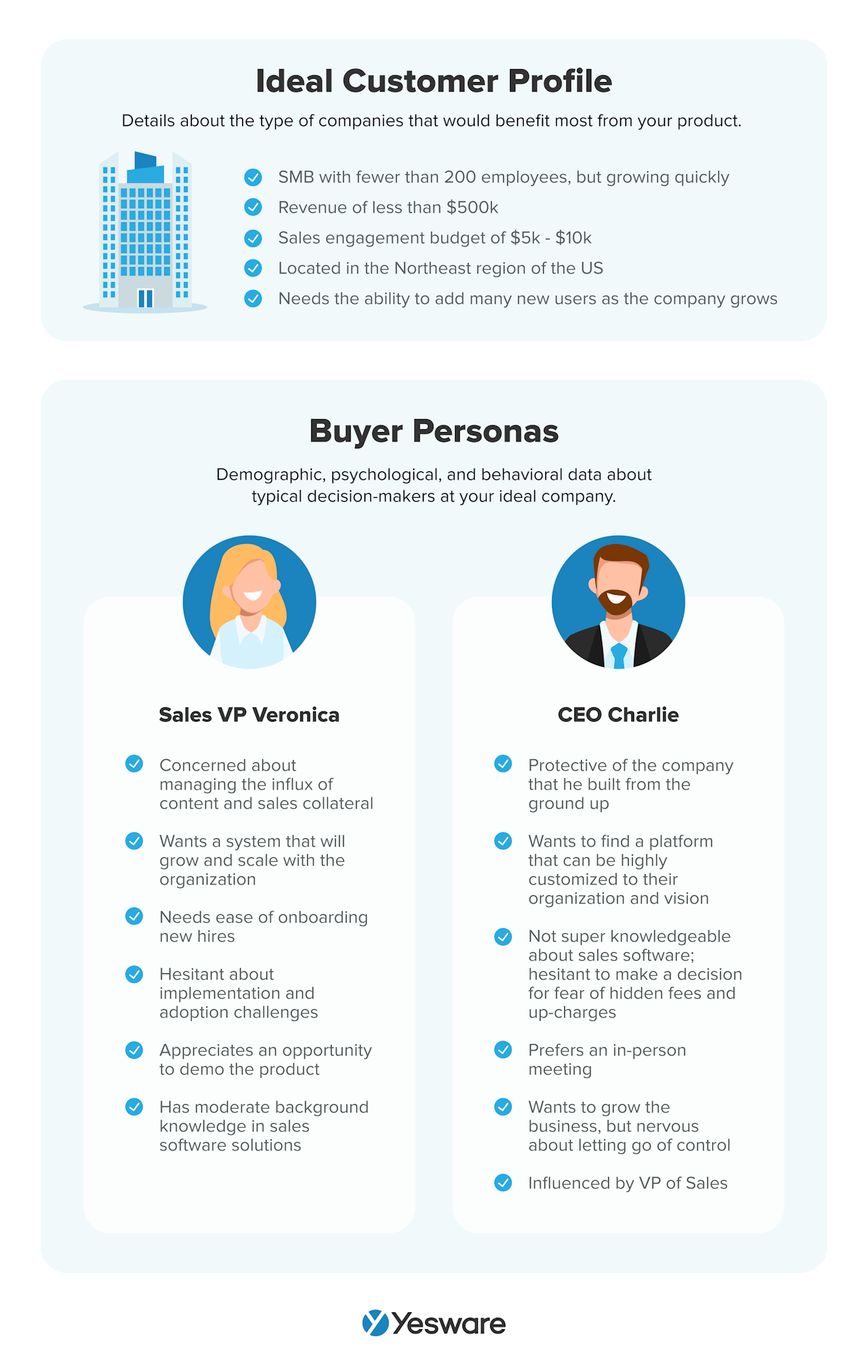 Remember: the best sales strategies are designed and optimized from the perspective of offering the most value to the potential customer. Your ICP and buyer personas will help ensure you build a customer-centric plan of action.
Remember: the best sales strategies are designed and optimized from the perspective of offering the most value to the potential customer. Your ICP and buyer personas will help ensure you build a customer-centric plan of action.
SMART Goals
Your sales strategy should also include SMART goals for the many parts and stages of your sales process.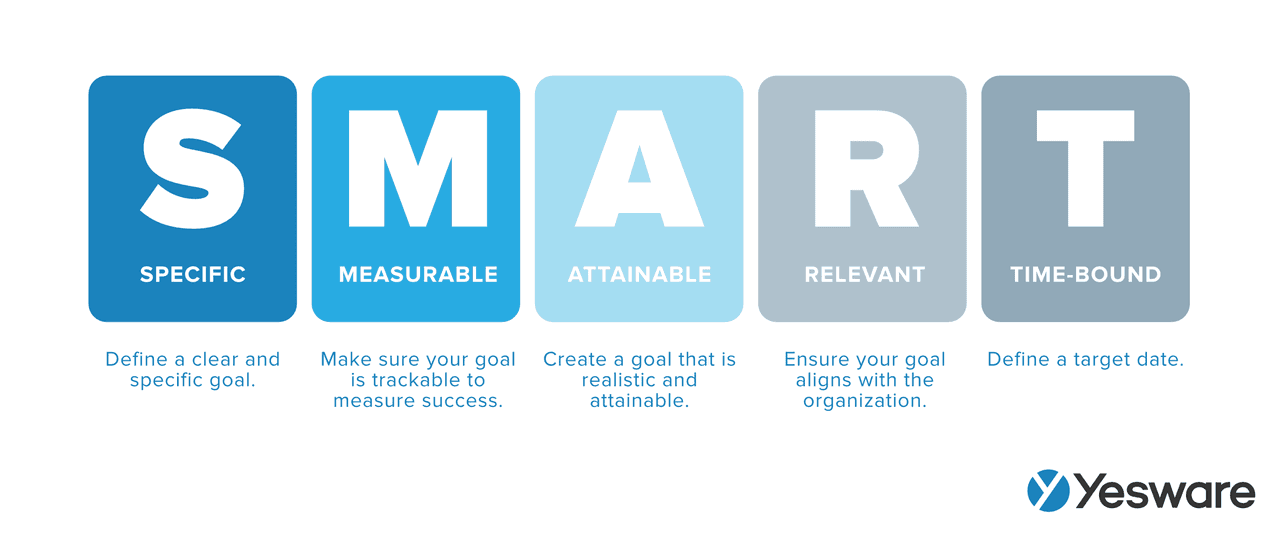 Following this intentional goal-setting framework will empower your sales team to continuously meet and exceed its goals.
Following this intentional goal-setting framework will empower your sales team to continuously meet and exceed its goals.
Sales Process Map
Your sales strategy should be a combination of big-picture goals, day-to-day processes, and administrative guidance. Including a thorough sales process map will help your reps know the exact sale activities expected of them. Here’s an example:
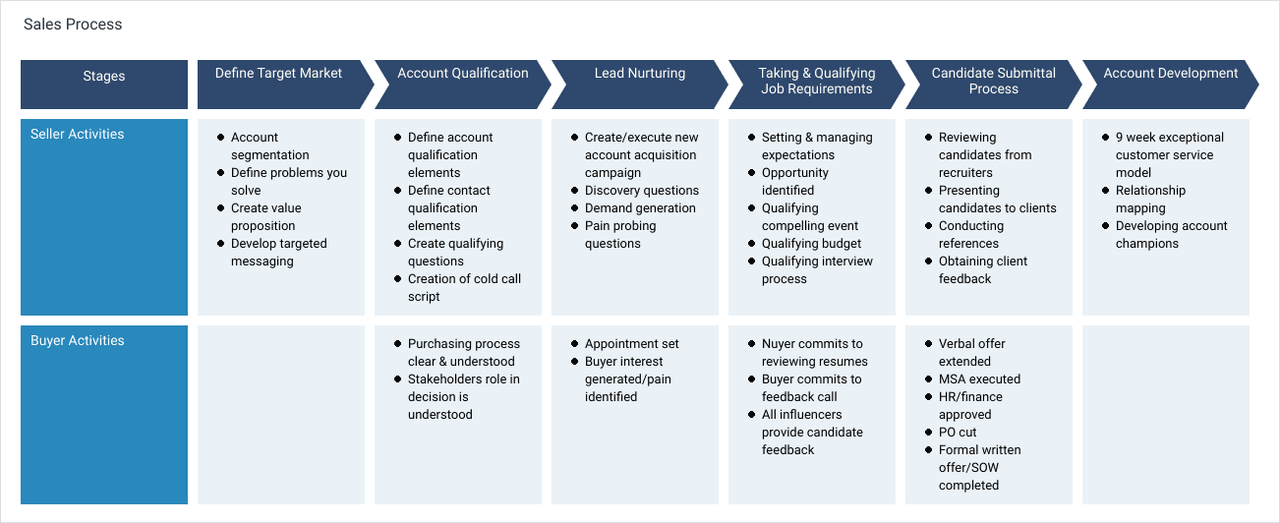
It’s helpful for the sales process map to be as detailed and as thorough as possible. Make efforts to include things like a team organization chart, a lead-scoring guide, and suggested cadences for outreach and follow-up.
SWOT
It’s a good idea to also include a SWOT analysis in your strategy.
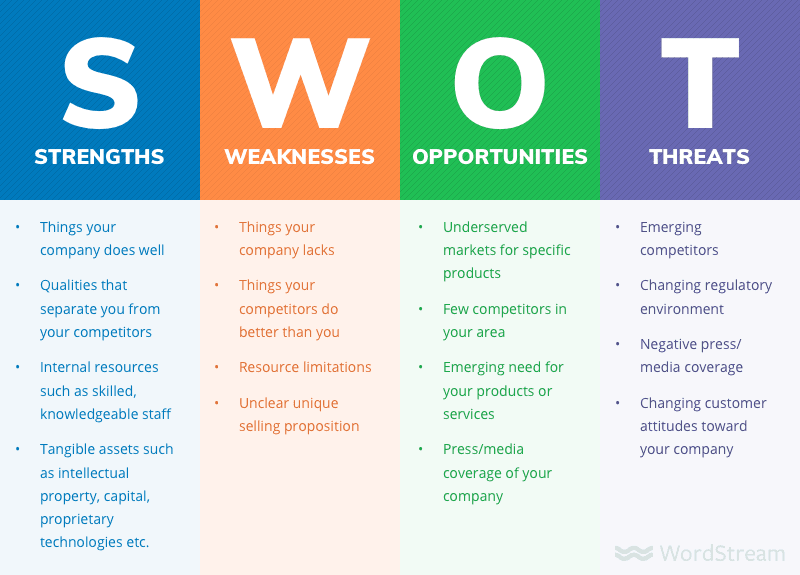
Knowing where your team stands in relation to your competitors and the overall market is a huge advantage, and should be a key component in developing and implementing your sales strategy.
Coaching or Training Plan
Embedded in your sales strategy should be clear and specific plans for how sales leaders will support their reps throughout the sales process. Most high-performing sales teams report that their leaders spend at least 20% of their time coaching their reps.
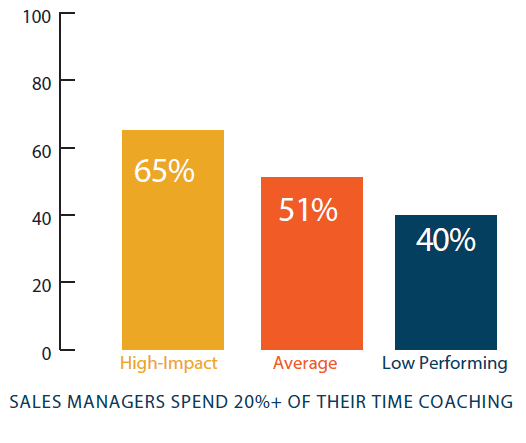 If you plan to hold any sales training sessions or meet with reps individually on a regular basis as part of a coaching program, you should outline your intentions in your strategy.
If you plan to hold any sales training sessions or meet with reps individually on a regular basis as part of a coaching program, you should outline your intentions in your strategy.
Messaging and Value Proposition
A big part of your successful sales strategy will be building a consistent brand message and value proposition. It’s important that your team members are trained in specific talking points, scripts, and objection-busters that will align with your brand messaging.
Your team should also be well-versed in the pain points most likely to come up in sales conversations that will ultimately trigger qualified leads to purchase.
Don’t overlook this step — brand consistency boosts average revenue by 23%!
Relevant Sale Methodologies
If you’re expecting your sales force to adhere to a certain sales methodology in order to achieve your goals, you should spell it out in your sales strategy.
Whether you adopt a consultative sales approach, a value-based one, or opt for target account selling, you need to make sure your team is well-versed in the specifics and overall tenets of your chosen method. They need to be able to incorporate them into their sales pitches with confidence.
Tech Stack Guide
Included in your sales strategy needs to be a primer on the different technologies your team will use in order to implement it. Again, the specifics of this document will vary by team and organization.
At the very least, take time to ensure that your reps are trained in how to get the most out of your CRM system.
Sales Strategy Examples – And When You Should Use Them
In reality, it’s likely that your sales team will utilize a variety and combination of sales strategies at any given time depending on your current size, goals, and strengths.
Here are just a small handful of different sales strategies that you might consider implementing with your team.
Social Selling
Social selling is an approach to the sales process that leverages the immense power and reach of social media platforms like LinkedIn, Facebook, and Twitter. It can help salespeople:
- Optimize their outreach process
- Provide valuable, targeted content to buyers at opportune moments
- Build trusting, long-term prospect and customer relationships
Social selling allows sellers to become thought leaders in their industry, which delivers huge benefits — 73% of salespeople who engage in social selling outsell their peers who don’t. With the no-end-in-sight increase in professional social media usage, this is a great inbound lead strategy for businesses of just about any size or market.
Upsell and Cross-Sell
According to Harvard Business Review, it’s anywhere from five to twenty-five times more expensive to sign a new customer than it is to retain an existing one.
With that in mind, consider implementing a strategy for upselling and cross-selling to existing customers. In addition to the obvious benefits they provide to your bottom line, cross-selling and upselling offer a number of other business-boosting perks to teams who execute them successfully.
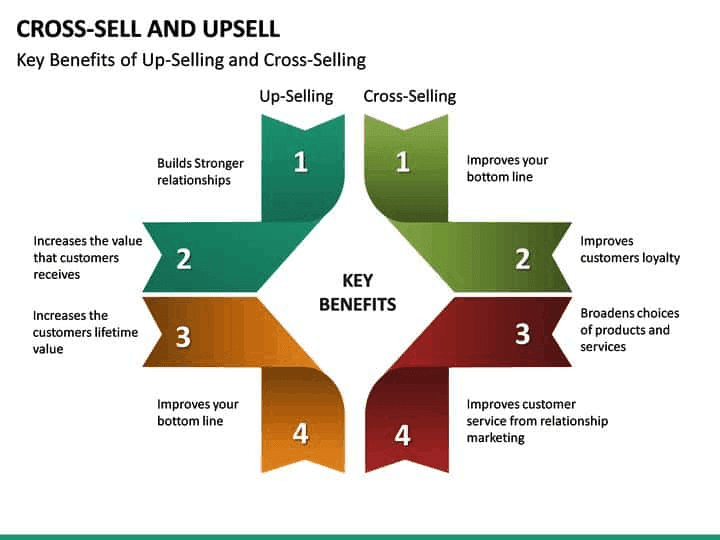
This sales tactic would work well for businesses who boast high customer success rates and are confident that their buyers reap substantial value from the product. A referral program could also tie in nicely here.
Hyper-Focus on a Sub-Market
For small businesses and startups that are just getting off the ground, zooming in on one small subset or niche of your target market can be a very efficient strategy. This kind of specialization will allow you to evaluate your sales process under a microscope. You can then take the lessons you learn and strengths you build, and apply them to larger and differentiated markets.
Think of this strategy as almost like a “pilot run” as you prepare to scale and grow; it allows you to run through your processes in an ultra-controllable environment where you’re likely to get direct feedback and actionable insights into how to improve as you grow.
Utilize Lead Scoring
At a certain level and stage of growth, the number of new leads can become so robust that reps need to make decisions about who moves through the rest of the funnel immediately, who needs more nurturing, and who isn’t a good fit at all.
In situations like these, a lead-scoring system can be a great sales strategy in trying to optimize the top of the funnel.
Your lead-scoring system can take any number of forms. You might opt for one that’s point-based, like this one:
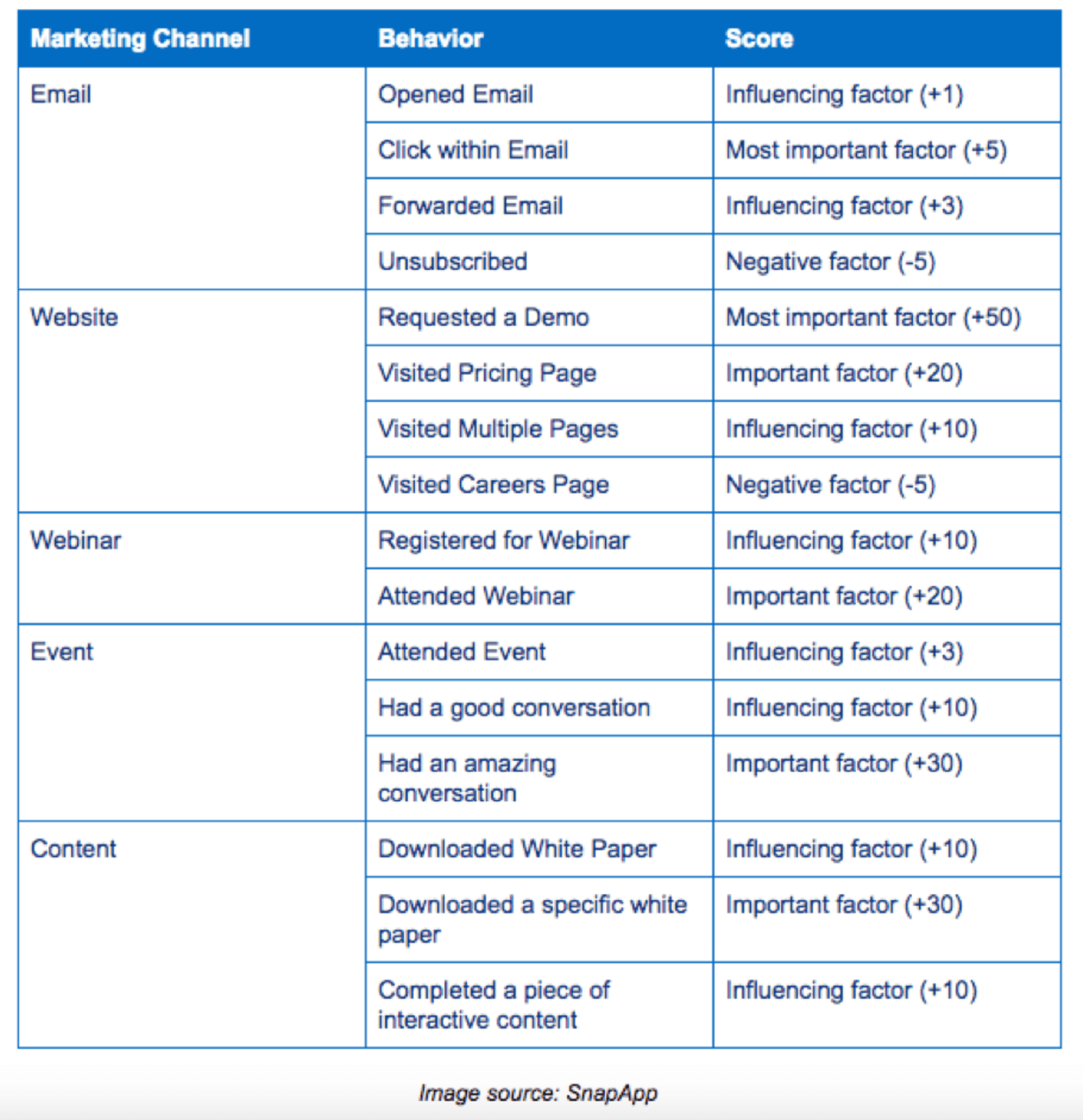
Some systems have a bit more fluidity and wiggle room, like the matrix shown here:
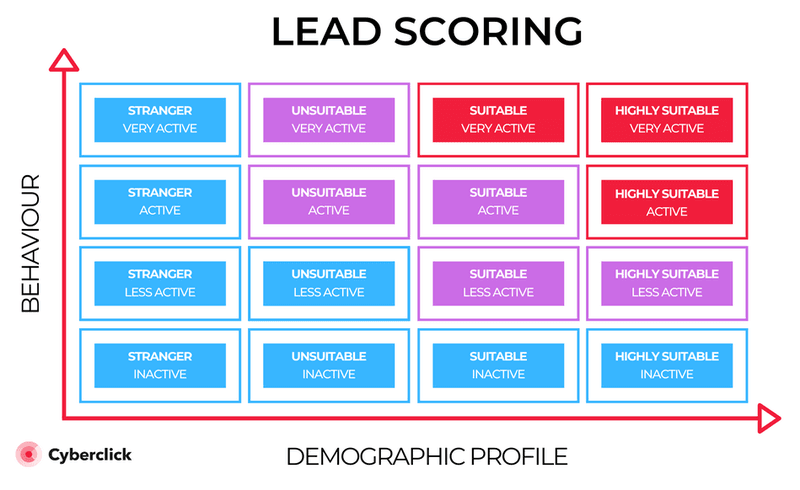
Regardless of the system you choose, the lead-scoring strategy will work well for organizations who are ready to drill down into their prospecting process and start optimizing the top half of the funnel.
Build a Nurture Funnel
Speaking of a lead-scoring system, they can also come in handy for determining what to do with leads who are good fits, but are not yet ready to buy. For these leads, you need a nurture strategy.
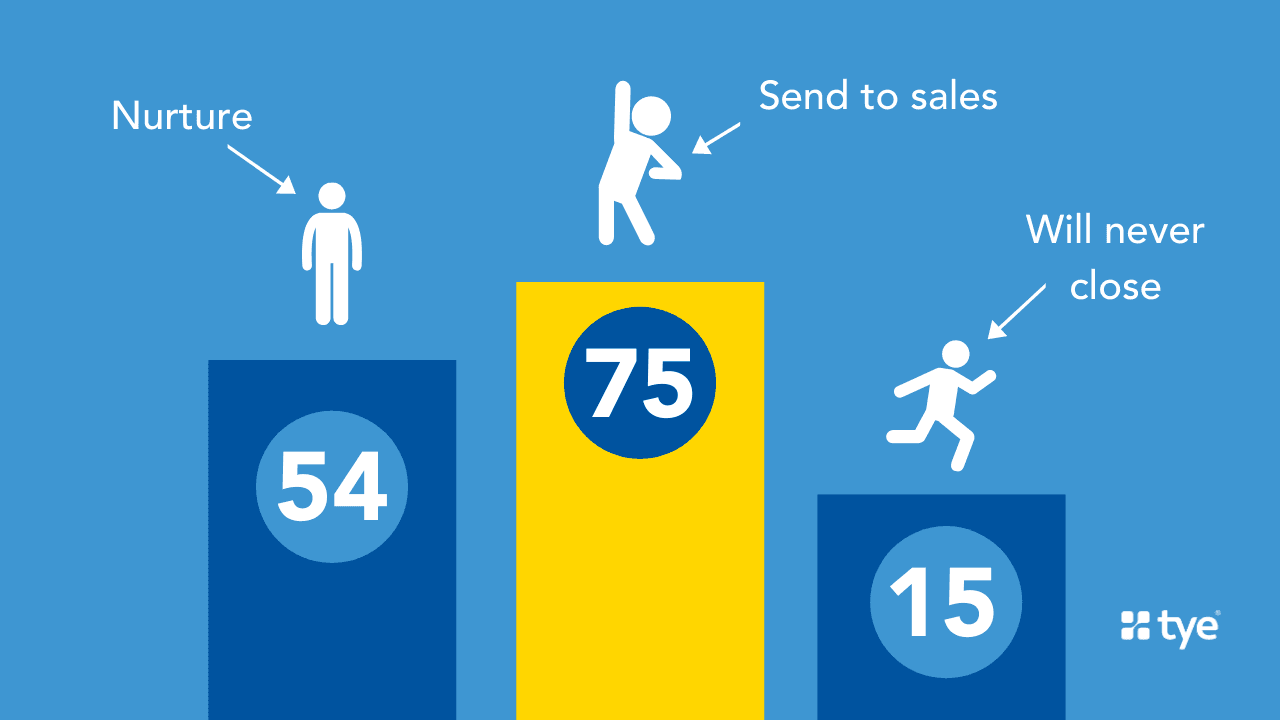
The lead-scoring strategy can work in conjunction with a slow-nurture strategy that includes intentional communication and content marketing. This may lead to a longer sales cycle for some, but it also prevents the loss of qualified leads due to lack of engagement.
As you can see, there are a nearly limitless number of sales strategies that can be adapted and implemented according to individual organizations’ needs. And remember, each strategy can be refined, replaced, or added to as you continue to optimize your sales process and performance.
How Yesware Can Help Take Your Sales Strategy to the Next Level
Yesware was designed to help salespeople meet their sales goals with less effort. No matter which sales strategy your team chooses, Yesware’s suite of software tools will optimize its execution.
First, Yesware allows you to personalize your outreach for any strategy, any market, and any stage of the pipeline.
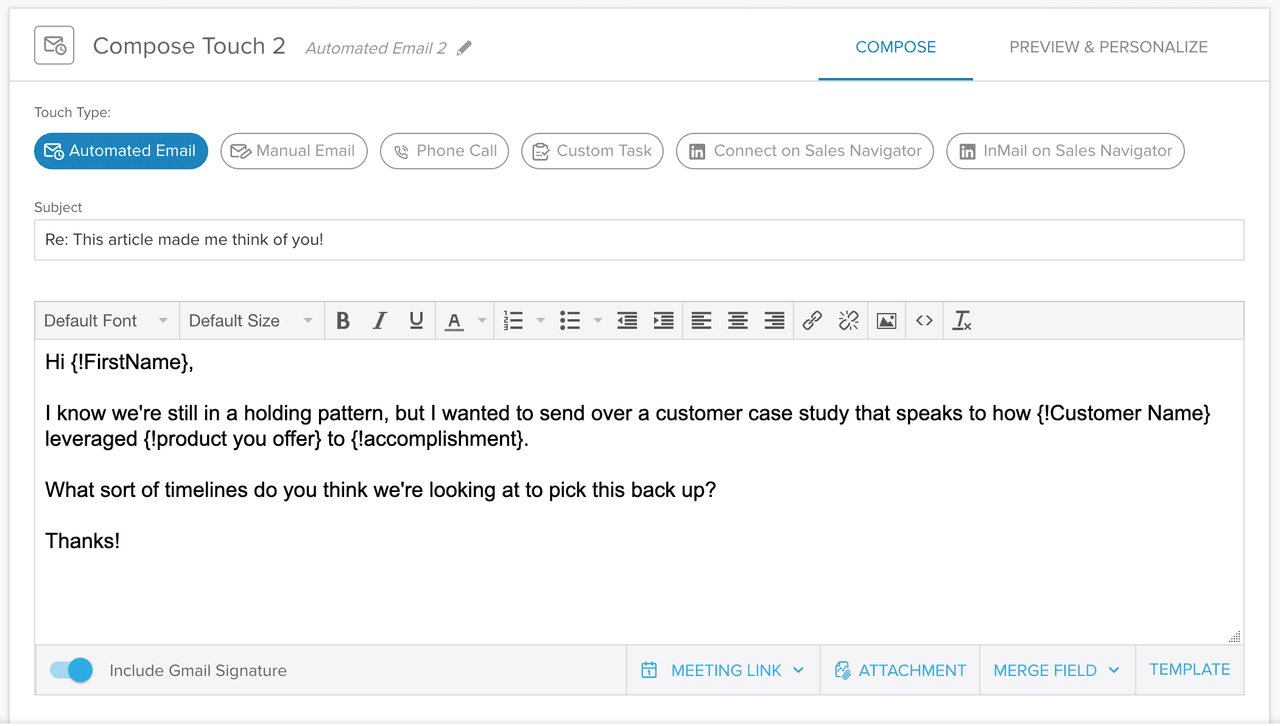
Our email templates and multi-channel campaign features allow reps to organize and nurture a variety of different leads and stages.
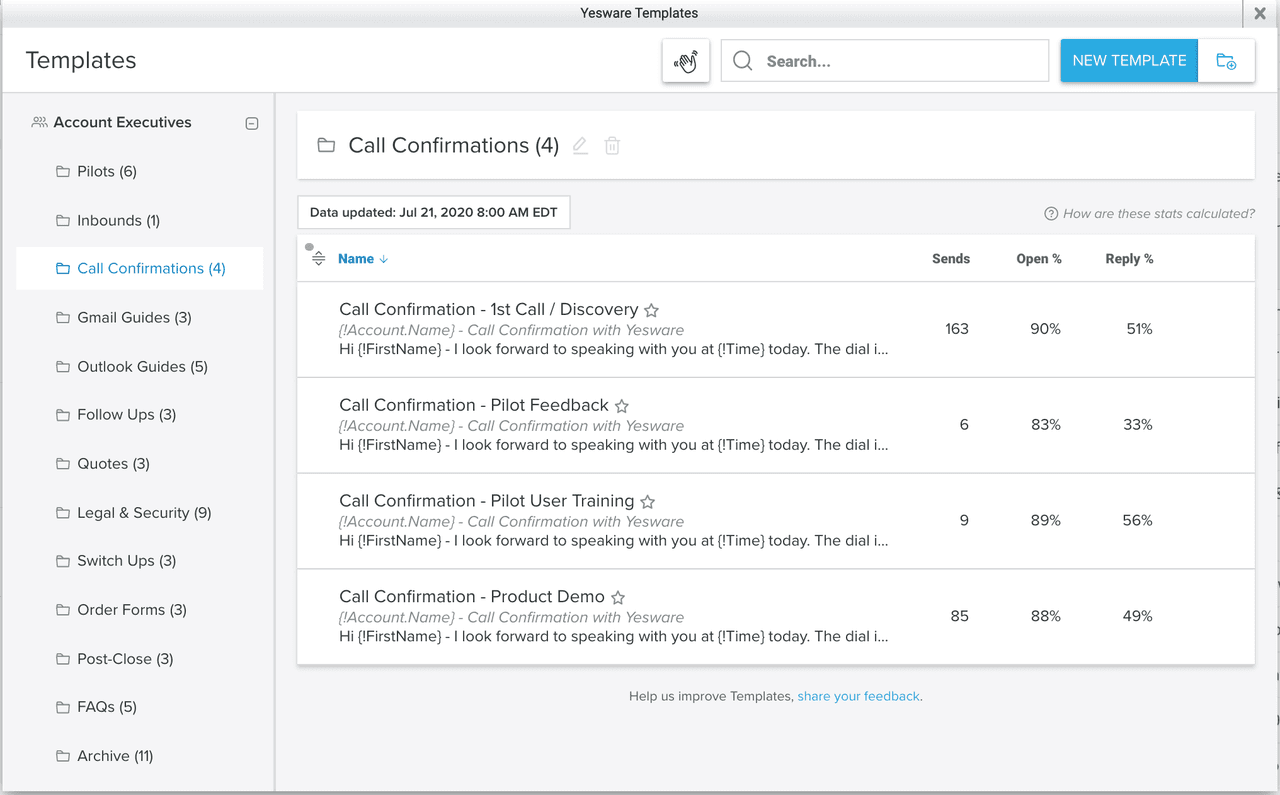
Yesware also helps you master the follow-up. Given that 80% of sales require 5 follow-up calls, it’s critical that reps have tools like Yesware at their disposal that offer robust automation to help them manage all of those moving pieces and time your follow-up perfectly.
![]()
Yesware also gives salespeople the ability to track and analyze their sales activity.
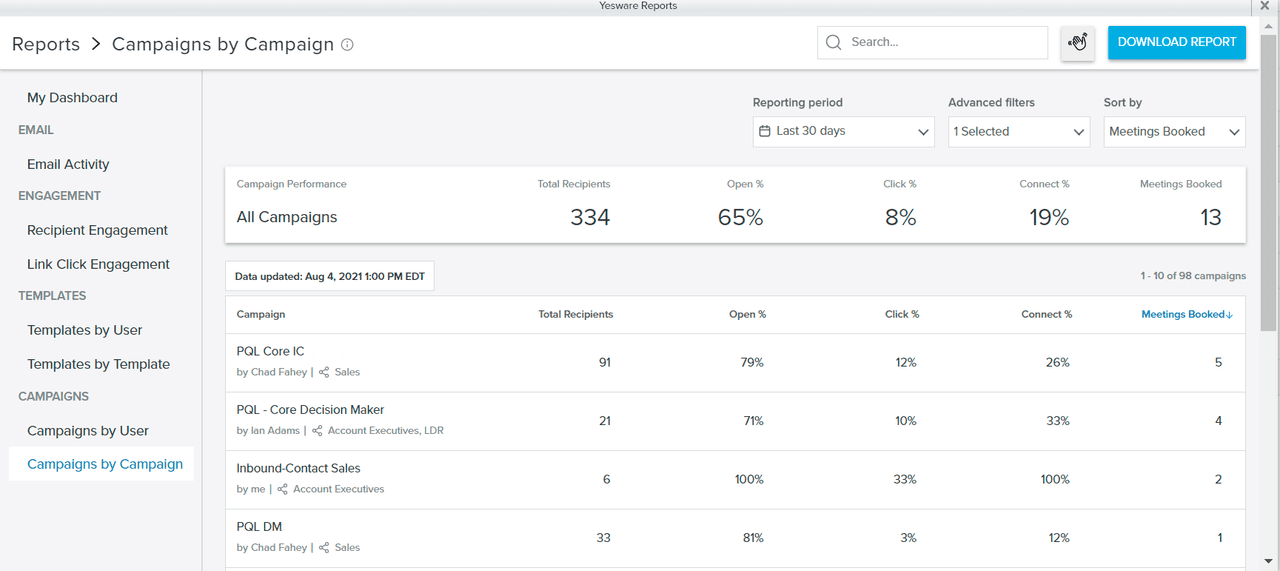
With reports on daily sales activities, engagement data, and outcomes, your team can pinpoint exactly what’s working to accelerate your progress.
Try Yesware for free today to see how we can help your business grow.
What sales strategies has your team implemented in the past? Have they been successful? If you haven’t defined a strategy yet, try doing so using the tips outlined in this article.
Get sales tips and strategies delivered straight to your inbox.
Yesware will help you generate more sales right from your inbox. Try our Outlook add-on or Gmail Chrome extension for free, forever!
Related Articles
Casey O'Connor
Casey O'Connor
Casey O'Connor
Sales, deal management, and communication tips for your inbox
![How To Create A Foolproof Sales Strategy [Examples]](/blog/_next/image/?url=https%3A%2F%2Fwww.yesware.com%2Fwp-content%2Fuploads%2F2021%2F09%2Fyesware-sales-strategy-example.jpg&w=1984&q=75)
